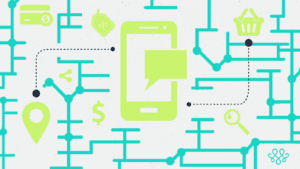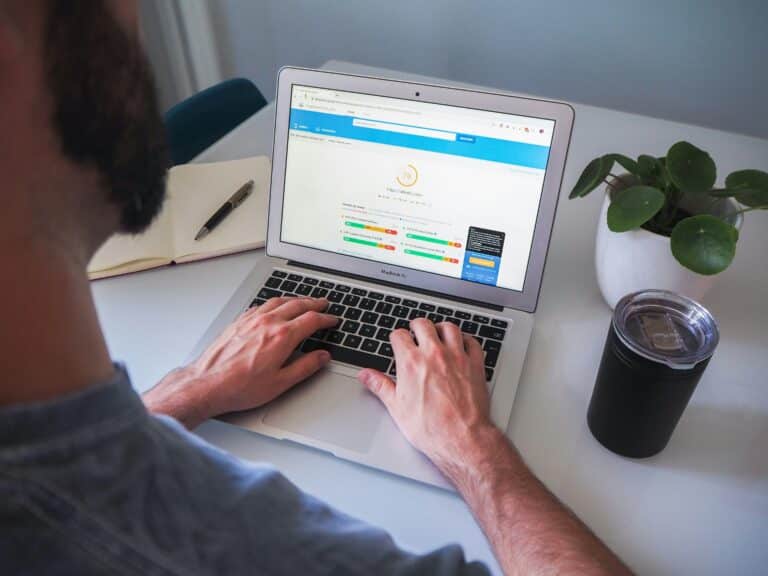
While holograms and flying cars may still be a vision of a George Jetson lifestyle, ads and notifications tailored to your exact location are a very real aspect of the future that is present now. Location-based marketing is capable of changing our world forever, but what exactly falls under this category, and how does it work? Geotargeting, geofencing, and beacons are the three main terms you should strongly consider adding to your repertoire of the latest technological advances in the world of marketing.
GEOTARGETING
This involves delivering different content, such as ads, to a website user based on their geographical location. People are naturally drawn to events and deals happening around them. That’s why geotargeting delivers web content that is highly relatable to their location. When you acquire information from geotargeting, you can pair it with pre-existing data about a user’s preferences, actions, or demographics in order to better enhance the personalization of those push-ads. Geotargeting is effective for reaching users that you have some prior background knowledge about the product or company within a broad designated area, like a zip code.
How does geotargeting work?
Every device connected to the internet has an individual IP address, much like your home address. Geotargeting uses these IP addresses to find and reach all devices within a given range. The first three digits provide a country code; the numbers go as in-depth as a postal code.
Examples:
On the Airbnb homepage, web content is different based upon your location. When you’re in California you get accommodations in cities such as Santa Cruz, San Francisco, and Monterey. When you access Airbnb from Singapore, the images automatically show accommodations in cities neighboring Singapore. This is a perfect example of how a large organization utilizes geotargeting to display relevant information to their visitors.
Geofencing
Similar to geotargeting, but geofencing allows a business to send notifications to people by the use of a virtual fence or a designated boundary that a marketer sets. As opposed to geotargeting, geofencing does not go as in-depth to pair with specifics such as demographics; however, it does target the area more accurately. For this reason, it’s a tool that is especially useful for retailers. You would be capable of sending out a notification to anyone passing by your store location, entering a mall, or in the parking lot. Receiving a location-triggered alert or deal makes the consumers considerably more likely to stop in and shop at your business.
How does geofencing work?
Using GPS technology, a tiny chip in your phone creates a virtual fence around a chosen geographical area. Assuming a customer has opted-in to your notifications, once a device moves in and out of the fenced off space, the user receives an ad, offer or notification via text, email, or through an app. Geofencing typically reaches users within a 50-meter range.
Examples:
For example, an auto dealer could set up a geofence aimed at targeting individuals who are leaving rival dealerships after browsing for a car. Hitting them with an offer for zero percent financing on a comparable car model at that moment is more likely to make them come comparison shop. Even if a geofenced offer doesn’t provoke an immediate visit or sale, it allows a business to know exactly what location a consumer passed through – and where they were when they received the offer or notification.
Additionally, consider this:
Rumors are circulating that Starbucks is thinking about establishing a geofence around each of their locations. The geofence would alert passersby that there’s a deal on a specialty coffee drink just around the corner. It sounds pretty cool, but if you live in a place like New York City, the number of alerts you would receive, simply by walking a few blocks down the street, would be outrageous.
Beacons
Tangible objects, usually under two square inches. Place beacons in a location that you choose, and detect a user’s mobile device. These tools themselves do not send content but discover a device when in range, then allowing a server to send out your choice of communication. Beacons have a greater sensitivity than GPS-based location tracking. This allows them to be much more accurate than both geotargeting and geofencing. These identifiers can detect your location almost to the inch. Primarily, brick and mortar stores use them for determining which aisle a user is in, what displays they’re looking at, and for how long.
There are even beacon-embedded mannequins! This tool would allow you to send deals to your customers as soon as they stop at any given display. From a store or business standpoint, this would inform you of which products are most appealing and this also grants you the knowledge of how to arrange your store to be most visually stimulating. Most brands that have tried beacons are satisfied with them. The downside to this tool is that it uses Bluetooth as opposed to GPS or WiFi. So, the user has to have their Bluetooth turned on – which isn’t as common.
How do beacons work?
We also refer to Beacons as Bluetooth Low Energy or BLE. This means that the battery life in them has great longevity and they can be used in areas without WiFi. Beacons are also less expensive than GPS or WiFi technology. Although, a lot of this is very new technology, it is available to leverage your business today. Beacons are affordable, practical, and easy to install.
Examples:
You would normally think that beacons would only be used in stores. This is in fact wrong. Beacons are used in various settings such as airports, sporting arenas or stadiums, corporate lobbies and even trade shows. The latest adopter of the beacon technology is the Cleveland Cavaliers Stadium. They are now offering their customers a unique sporting experience. By pairing hundreds of beacons with their Cavaliers app they have the ability to send guests information based on where they are located in the stadium. These are things like sending fans special video content, promotional offers and even letting them see the average wait times for concessions stands near their section.
While all of these new tools that are available to us are absolutely groundbreaking, we must also take into account the reactions that they will beget. Business’s ability to access person’s whereabouts can be seen as intrusive. The best way to know how your target market will react to this new technology is to simply ask them. Put out polls and figure out just how much information your consumers are comfortable disclosing.


